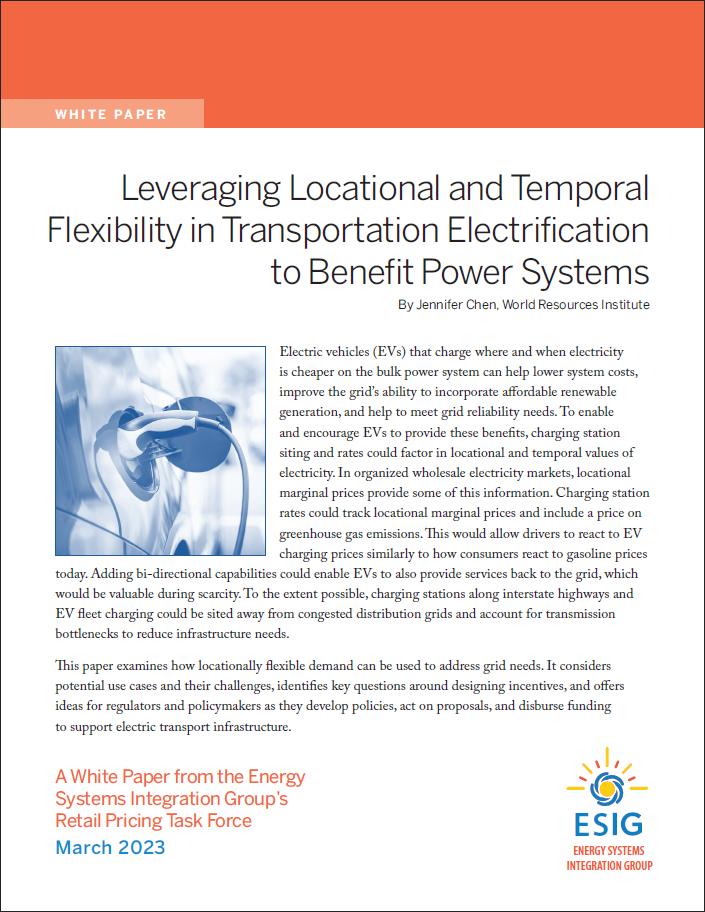 “Leveraging Locational and Temporal Flexibility in Transportation Electrification to Benefit Power Systems” is one of eight white papers from ESIG’s Aligning Retail Pricing with Grid Needs Task Force. The task force examined ways that retail pricing may be used more widely and more efficiently to allow flexible demand to respond to grid needs as the role of demand becomes increasingly important for the reliability of the grid. It brought together experts in rate design and electricity markets, transmission and distribution planning and operations, consumer advocates, and others to explore current issues, potential solutions, and practical implementation challenges involved in utilizing the flexibility in price-sensitive loads.
“Leveraging Locational and Temporal Flexibility in Transportation Electrification to Benefit Power Systems” is one of eight white papers from ESIG’s Aligning Retail Pricing with Grid Needs Task Force. The task force examined ways that retail pricing may be used more widely and more efficiently to allow flexible demand to respond to grid needs as the role of demand becomes increasingly important for the reliability of the grid. It brought together experts in rate design and electricity markets, transmission and distribution planning and operations, consumer advocates, and others to explore current issues, potential solutions, and practical implementation challenges involved in utilizing the flexibility in price-sensitive loads.
All of the white papers can be found here.
A Summary of “Leveraging Locational and Temporal Flexibility in Transportation Electrification to Benefit Power Systems” by Jennifer Chen
Electric vehicles (EVs) that charge where and when electricity is cheaper on the bulk power system can help lower system costs, improve the grid’s ability to incorporate affordable renewable generation, and help to meet grid reliability needs. To enable and encourage EVs to provide these benefits, charging station siting and rates could factor in locational and temporal values of electricity. In organized wholesale electricity markets, locational marginal prices provide some of this information. Charging station rates could track locational marginal prices and include a price on greenhouse gas emissions. This would allow drivers to react to EV charging prices similarly to how consumers react to gasoline prices today. Adding bi-directional capabilities could enable EVs to also provide services back to the grid, which would be valuable during scarcity. To the extent possible, charging stations along interstate highways and EV fleet charging could be sited away from congested distribution grids and account for transmission bottlenecks to reduce infrastructure needs.
This paper examines how locationally flexible demand can be used to address grid needs. It considers potential use cases and their challenges, identifies key questions around designing incentives, and offers ideas for regulators and policymakers as they develop policies, act on proposals, and disburse funding to support electric transport infrastructure.


